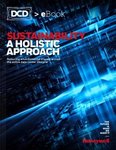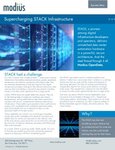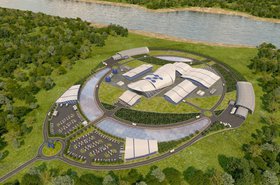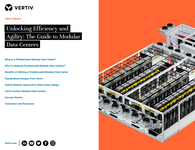In the digital age, data centers are the backbone of both personal and professional sectors, supporting the ever-growing demand for digital services.
Ensuring the uptime of these data centers is paramount, as any interruption can result in significant losses and data security risks.
However, many data centers built in the 80s and early 90s no longer meet modern demands, with outdated structures, inefficient layouts, and limited structural integrity. This issue is especially pressing as we witness the rise of high-density, power-intensive computing for applications like High-Performance Computing (HPC) and Artificial Intelligence (AI).
Despite these challenges, the potential of existing legacy data centers remains untapped. While some developers opt for new construction, there is immense potential in revitalizing existing, disused facilities through carefully planned retrofits.
This approach is particularly relevant in established data center hubs like Slough and West London, where available land for new construction is limited, and existing data centers offer untapped potential for optimization.
The environmental imperative of sustainable retrofitting
Data centers are notorious for their high energy consumption, making it a responsibility of the construction industry to minimize carbon emissions wherever possible.
Demolishing existing data centers, which can be sustainably refurbished, contributes significantly to carbon emissions. Repurposing these structures preserves embodied carbon and offsets the environmental impact of data center operations.
“Today, the data center and construction industries have a vital role to play in the climate change challenge, and going forward, we must work collaboratively to deliver the highest possible sustainability standards for our sectors,” says Paul Finch, chief technology officer at Kao Data.
“Part of the approach must be to recognize the intrinsic value that legacy infrastructures can offer both to the businesses and consumers and to ensure that efficient and sustainable operations are built in from the ground up.”
Challenges in sustainable retrofitting
While refurbishing disused data centers is a viable solution, several challenges must be overcome:
- Structural assessment: Identifying legacy data centers with underutilized capacity and unknown structural integrity is crucial. Understanding load capacity, floor layouts, and structural integrity is essential for successful retrofits.
- Energy efficiency: Maximizing natural free-air cooling and optimizing hot or cold aisles while considering the architectural impact of fit-outs is necessary for energy-efficient operations.
- Foundation and load capacity: Assessing existing foundations' ability to manage increased loads is critical, as foundation strengthening can be expensive and time-consuming.
- Live environments: Ensuring the uninterrupted operation of live data centers during refurbishments in sub-let spaces is a complex challenge that requires careful planning.
- Environmental impact: The impact on the local environment and community must be considered throughout the retrofitting process.
The solution: A thorough structural understanding
Unlocking the potential of disused or partially used data centers hinges on a comprehensive understanding of the existing structure. Structural modeling, archival research, and thorough investigations are key. Early investigations, including searches of planning and building control records, access to archive drawings, and intrusive and non-intrusive investigations, provide a holistic understanding of the structure's feasibility.
The approach includes thorough structural assessments to limit load increases on existing foundations to 14 percent, reducing the need for expensive foundation strengthening.
A small early expenditure for investigation works can provide an overall cost saving by de-risking the structure and can help identify the potential of a large volume of legacy properties.
Conclusion: Sustainable retrofitting for a greener future
Sustainable refurbishments not only unlock the potential of existing data centers but also contribute to reduced carbon emissions and help businesses achieve their sustainability goals.
As suitable land for data centers becomes scarcer, sustainable refurbishments are a viable option. Collaboration within the industry is essential to build and retrofit structures with the lowest possible carbon emissions.
By repurposing underutilized data centers and maximizing their potential, we can create modern, sustainable data centers that meet the needs of today's advanced computing customers while minimizing their carbon footprint.
This approach benefits a range of industries, from cloud computing to AI, while addressing environmental concerns and preserving embodied carbon. Data centers play a crucial role in the digital age, and their retrofitting is essential for a sustainable and technologically advanced future.







